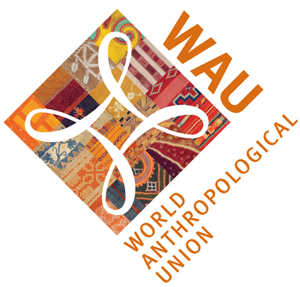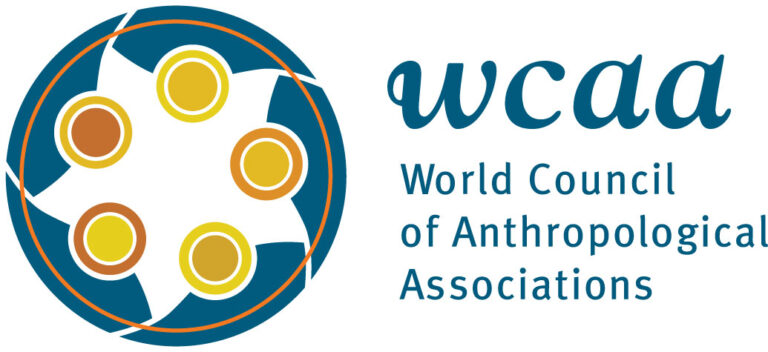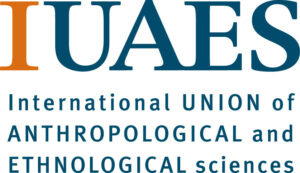Questions for Journal Editors for the Tenth Anniversary of Deja Lu
Etnografías Contemporáneas, University of San Martín (UNSAM), Argentina. Interviewee: Soledad Córdoba, interview by Lía Ferrero. Translated from Spanish by Lía Ferrero
January 3, 2022
Lía Ferrero: Tell us about Etnografías Contemporáneas
Soledad Córdoba: This journal was born in 2005 in print format, linked to researchers at what nowadays is the Interdisciplinary Faculty of Higher Social Studies (IDAES- UNSAM). This lasted until 2010, and in 2015 another stage began, which is the virtual stage. It is all related to the institutional changes that IDAES is undergoing. In 2015 it was taken over by the Centre for Anthropology Studies (CAS) of IDAES. Silvia Hirsch took over as director and the whole work process was changed, because at that time all the professionalization aimed at citation indexing and standardizing work processes to meet the requirements of an indexed journal began.
Basically, the work process is this: an initial evaluation of the article is made to see if it is in line with the journal’s objectives, the scope of the journal, and the topics of interest, because there is also an agenda that we maintain, a certain balance between the topics that are published. This work is done by the editor and the director. After that first editorial evaluation, the whole process of peer review begins, double-blind. This process is facilitated by the editorial assistants who are doctoral students, postgraduate students, in general from IDAES and they are assigned one or two articles each, in general there are two for follow-up, in each issue, so the editorial assistant will do all the follow-up through the OJS platform, through the platform he/she will do all the follow-up of communication with the author, in other words, he/she will mediate the communication between the peer-reviewers and the authors. This team has changed very little from 2015 to date. Although the virtual era of the journal began in 2015, it took us three or four years to make the first concrete achievements, which were to achieve citation indexing. All of that required three years of work for sure, of making statistics, and of starting to standardize the whole work process,
L: And part of that standardization was to install the journal in the OJS platform?
S: Yes, exactly. That is not easy because it does not only depend on our will; there is a whole technical issue that has to be adapted. Journal editing software is often so specific that technicians with average skills do not have it and therefore have to be trained. The university must, in turn, understand the relevance of this, in other words, it is not automatic, it is necessary to explain to the institution the importance of an academic journal, the importance it has for making research visible, there is a whole series of things that must be done not only at a technical level but also at a political level as well, to make visible to the institution what an academic journal is, why it is important for the institution to make its research visible.
L: Do you have any financial support for the journal?
S: The first phase is done by the director, editor and the assistant editors. For the last phase there is a proofreader, who does the final correction, it depends on the university library. All the design and graphic production, the journal’s graphic platform, all of this is done by UNSAM Edita (the university press), and the strictly technical IT part depends on UNSAM’s IT department. In other words, it is an important articulation of actors that is often not easy to coordinate. Dissemination also depends on another UNSAM department.
L: So the university, the UNSAM, supports the journal financially, not with direct money but with technical issues, proofreading and layout. Is that right?
S: Exactly, we don’t receive any kind of remuneration, the positions are completely ad honorem, both the director, the editorial coordinator, who is me, and the assistants, who are postgraduate students, none of us receive any remuneration. The others who are part of other UNSAM departments do.
L: Does the journal have sections, how is it designed?
S: Yes, the journal is designed with a first section of non-thematic articles, where generally three independently submitted articles are published, with an ethnographic approach and empirical work, we prioritize that. Then there is the special thematic section, where between six and seven articles are published. What is done is to launch a call for thematic issue coordinators to present a theme and what we do, Silvia and I, is to select which themes seem to us to be the most appropriate and we establish an order of priority according to the proposals we have. The proposers will be in charge of selecting those six or seven articles; the selection does not go through Silvia and myself but through the editors of the special issue.
L: And they are the ones who send them for peer-reviewing?
S: No, the mediation process between authors and reviewers is always done by the journal. The whole process of anonymization and double-blinding goes through the OJS platform. We ask the coordinators of the special issue to indicate suitable reviewers.
L: So, on average, the journal publishes between 9 and 10 articles per issue: three non- thematic articles and six or seven in the special section.
S: Exactly, and then we have the reviews section, with two reviews per issue, with preference done by postgraduate students who want to start publishing.
L: What languages do you publish in?
S: Spanish and Portuguese. We have published translations of important articles from English, by authors such as George Marcus and Didier Fassin.
L: Do you have any rules regarding the number of authors published in each issue that can be from UNSAM?
S: Well, as part of the indexing requirements we cannot have 100% UNSAM authors, but although we have this as a requirement that we have to respect, it happens quite spontaneously that we do not have this.
L: Since you mentioned indexing again, do you remember any modification, any decision you have taken, any internal discussion or any change in what the journal has been doing?
S: It changed everything because initially the process was much more artisanal, and what indexing does is, it gives you a whole series of guidelines starting from how the journal has to be presented. You go into the different journals, you will see that they all have the same information, so this process on the one hand takes away a bit of originality from the presentation. That implied a complete restructuring of the website in the first place and secondly it implied that the work process was much neater, that things had to be done in an orderly way, it tidies up the work process as well. And on the other hand, this question of starting to pay attention to “how many authors do we publish from here, how many from abroad, how many evaluators are from IDAES, how many are from other institutions in Argentina, how many are from abroad”: all that becomes important.
L: How would you you sum up your journal? Do you foresee or have any challenges for the future of the journal or any tensions or issues that you are trying to get out of?
S: To sum up Etnografías Contemporáneas, there is a strong ethnographic imprint; there is a selection of works that gives priority to showing field work. As for challenges, the whole technical IT process, which does not depend specifically on our wills, still has room for improvement. There is also room for improvement in the indexing process, to achieve higher indexing, better positioning and so on; there is still much to be done. I would like to highlight one thing: during the indexing process we received financial support from the IDAES, to hire assistants to help us in this process, because it was not easy, and we received specific support to help us in the editorial process.
L: Is the work as editor or director of the journal recognized within UNSAM?
S: It is valued as a management/administrative job, which means that it can aid as a background to apply for a management position.
L: And with your fellow lecturers, is your work as an editor recognized?
S: Let’s say that the journal is recognized, everyone at IDAES knows what Etnografías Contemporáneas is and who is its director, its coordinator and so on, and it is a work that, when we talk about it, yes, my colleagues recognize it. It is not something that is on the agenda, but it is something that we have talked about, for example, for the different seminars of the degree in anthropology, to use the publications that are in the journal as a part of their syllabus.
L: Since the journal was indexed, did you feel a greater influx of articles?
S: Yes, totally, totally, as I said, one of the changes that took place was that we used to publish translations of important authors, on the one hand because that was relevant for the Spanish-speaking public. On the other hand, after indexing, we started to receive many high-quality articles, so that we could select between them. That way, the journal began to take a much more accentuated direction towards the publication of papers with a much clearer ethnographic approach. So that was one of the main differences: that citation indexing brings you a greater variety, not only nationally but also from the region or even from abroad, authors from abroad seeking to publish.



